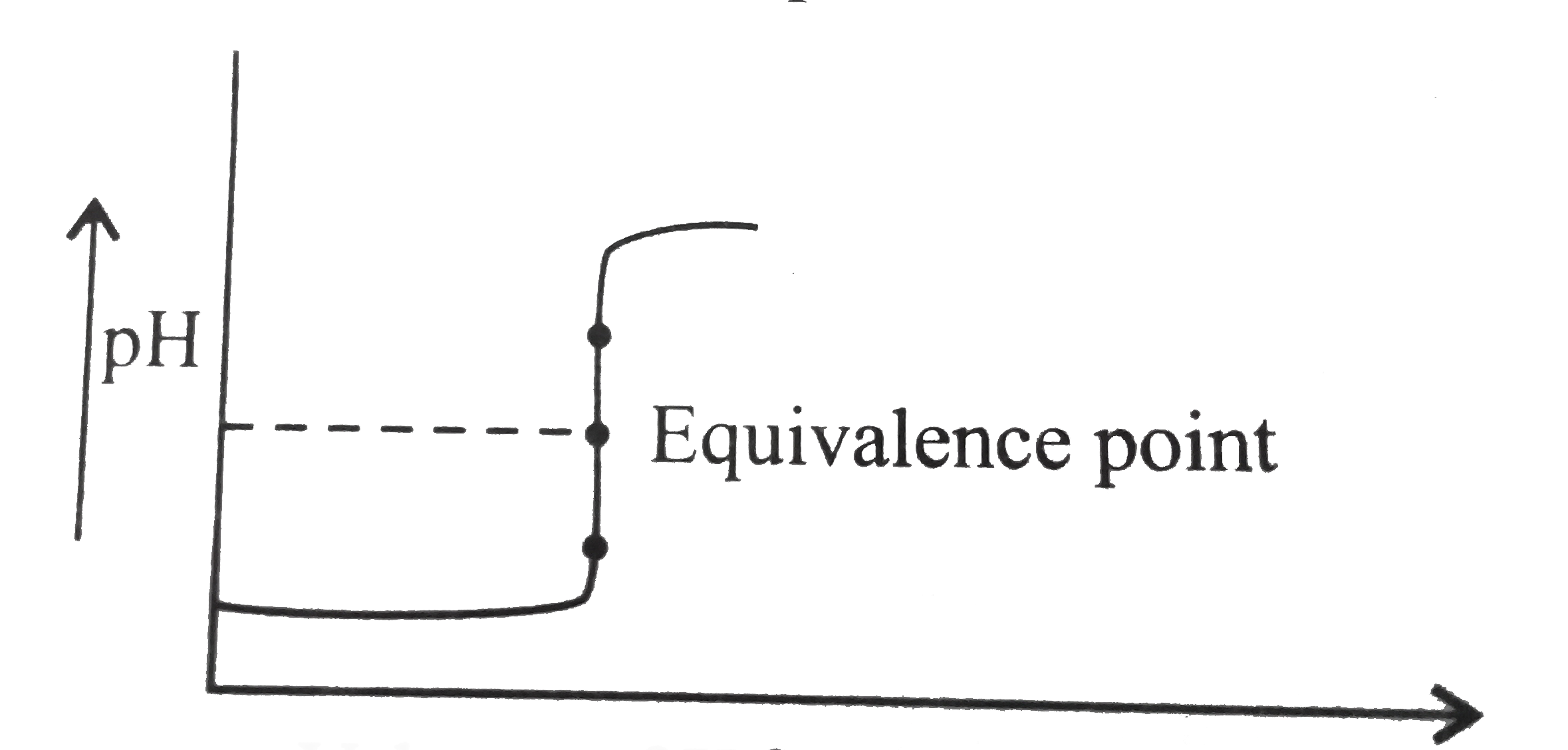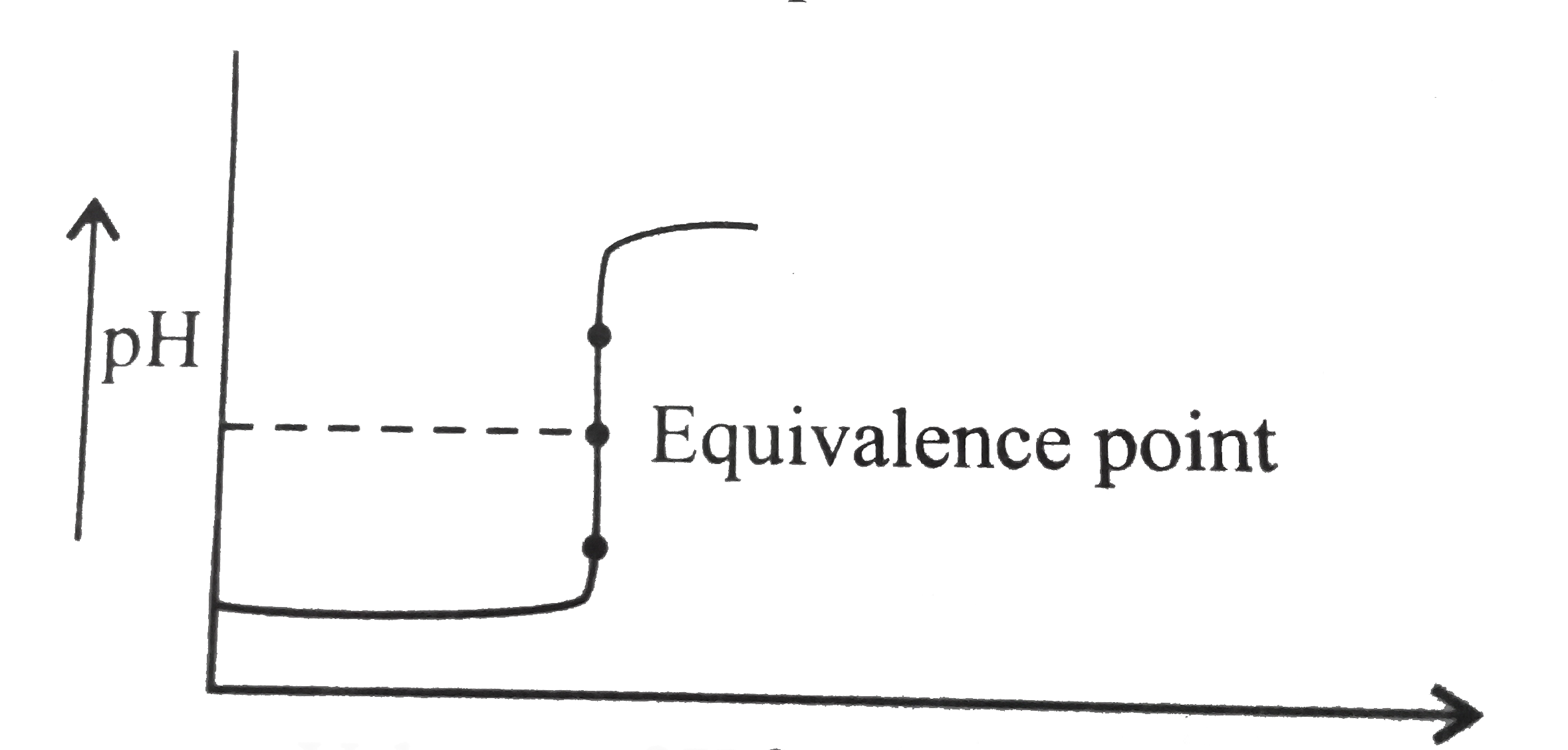At the end point, there is a sharp change of colour in the indicator. This happened because the
pH a end point changes sharply.
Structure of the indicator changes.
Colour of indicator is adsorbed by water.
Dissociation constant of acid and base differ by 10.
The correct Answer is:A, B
To solve the question regarding the sharp change of color in an indicator at the endpoint of a titration, we can break down the explanation into clear steps:
1. Understanding the Endpoint and Equivalence Point:
- In a titration, the endpoint is the point at which the reaction is complete, and the equivalence point is where the amount of titrant added is stoichiometrically equivalent to the amount of substance in the sample.
2. Role of Indicators:
- An indicator is a chemical that changes color at a specific pH range. It is used to visually signal the endpoint of a titration.
3. pH Change at the Endpoint:
- At the endpoint of a titration, there is a significant change in the pH of the solution. This is due to the neutralization reaction that occurs, which can lead to a rapid shift in the acidity or basicity of the solution.
4. Sharp Color Change:
- The sharp change in color of the indicator occurs because the pH of the solution changes rapidly at the equivalence point. The indicator will change color at a specific pH, and when the pH crosses this threshold, a noticeable color change is observed.
5. Conclusion:
- Therefore, the sharp change of color in the indicator at the endpoint is due to the sharp change in pH that occurs at this point in the titration.
Final Answer:
The sharp change of color in the indicator at the endpoint happens because of the sharp change in pH at the equivalence point.
- In a titration, the endpoint is the point at which the reaction is complete, and the equivalence point is where the amount of titrant added is stoichiometrically equivalent to the amount of substance in the sample.
- An indicator is a chemical that changes color at a specific pH range. It is used to visually signal the endpoint of a titration.
- At the endpoint of a titration, there is a significant change in the pH of the solution. This is due to the neutralization reaction that occurs, which can lead to a rapid shift in the acidity or basicity of the solution.
- The sharp change in color of the indicator occurs because the pH of the solution changes rapidly at the equivalence point. The indicator will change color at a specific pH, and when the pH crosses this threshold, a noticeable color change is observed.
- Therefore, the sharp change of color in the indicator at the endpoint is due to the sharp change in pH that occurs at this point in the titration.
The sharp change of color in the indicator at the endpoint happens because of the sharp change in pH at the equivalence point.
Topper's Solved these Questions
- IONIC EQUILIBRIUMBOOK - CENGAGE CHEMISTRY ENGLISHCHAPTER - IONIC EQUILIBRIUMEXERCISE - Exercises Single Correct
121 Videos
- IONIC EQUILIBRIUMBOOK - CENGAGE CHEMISTRY ENGLISHCHAPTER - IONIC EQUILIBRIUMEXERCISE - Exercises Assertion-Reasoning
36 Videos
- IONIC EQUILIBRIUMBOOK - CENGAGE CHEMISTRY ENGLISHCHAPTER - IONIC EQUILIBRIUMEXERCISE - Exercises Linked Comprehension
45 Videos
- HYDROGEN, WATER AND HYDROGEN PEROXIDEBOOK - CENGAGE CHEMISTRY ENGLISHCHAPTER - HYDROGEN, WATER AND HYDROGEN PEROXIDEEXERCISE - Subjective Archive (Subjective)
3 Videos
- ISOMERISMBOOK - CENGAGE CHEMISTRY ENGLISHCHAPTER - ISOMERISMEXERCISE - Assertion-Reasoning Type
1 Videos
Similar Questions
Acid rain happens because :
View SolutionThe colour of a star indicates its
View SolutionWhen sugar is heated, its colour changes into
View SolutionLichens indicate SO_(2) pollution because they
View SolutionAcid-base indicator such as methy1 orange, phenolphthalein, and bromothymol blue ate substances which change colour accroding to the hydrogen ion concentration of the solution to which they are added.
Most indicators are weak acids (or more rarely weak base) in which the undissociated and dissociated forms have different and distinct colours. If methy1 orange is used as the examples and the un-dissociated forms is written as HMO, then dissociation occurs as shown below:
Reaction: HMO⇔H⊕+MOΘRedColourlessYellow
The indicator should have a sharp colour change with the equivalence point of the titration. Usually the colour change of the indicator occurs over a range of about two pH units. It should be noted that the eye cannot detect the exact end point of the tiytration. The pKa of the indicator should be near the pH of the solution at the equivalance point.
Which of the following sitution exists at the equivalence point of titration?
View SolutionThe overall equation for the reaction between sodium carbonate solution and dilute hydrochloric acid is
Na2CO3(aq.)+2HCl(aq.)→NaCl(aq)+CO2(g)H2O(l)
If you had the two solutions of the same concentration, you would have to use double volume of HCl to reach the equivalence point.
Indicators change their colours at the end point of the reaction and hence we are able to know the end points (equivalence points of reactions).
25 ml of Na2CO3 solution requires 100 ml of 0.1 M HCl to reach end point with phenolphthalein indicator. Molarity of HCO3− ions in the resulting solution is
View SolutionIn acid-base titration react rapidly to neutralise each other. Equivalence point is a point at which the acid and the base (or oxidising agent and reducing agent) have beem added in equivalent quantities. The end point in the point at which the titration stops. since the purpose of the indicator is to stop the titration close to the point at which the acid and base were added in equivalent quantities, it is important that the equivalent point and the end point be as close as must change colour at a pH close to that of a solution of the salt of the acid base. Singificantly, the pH changes most rapidly near the equivalent point. The exact shape of a titration curve depends on Ka and Kb of acid and base.

The pH at equivalence point is
View SolutionIn acid-base titration react rapidly to neutralise each other. Equivalence point is a point at which the acid and the base (or oxidising agent and reducing agent) have beem added in equivalent quantities. The end point in the point at which the titration stops. since the purpose of the indicator is to stop the titration close to the point at which the acid and base were added in equivalent quantities, it is important that the equivalent point and the end point be as close as must change colour at a pH close to that of a solution of the salt of the acid base. Singificantly, the pH changes most rapidly near the equivalent point. The exact shape of a titration curve depends on Ka and Kb of acid and base.

The curve represents the titration of
View SolutionAn acid base indicator has Ka=1.0×10−5 the acid form of the indicator is red and the basic form is blue. Calculate the pH change required to change the colour of the indicator from 80% red to 80% blue.
View SolutionThe overall equation for the reaction between sodium carbonate solution and dilute hydrochloric acid is
Na2CO3(aq.)+2HCl(aq.)→NaCl(aq)+CO2(g)H2O(l)
If you had the two solutions of the same concentration, you would have to use double volume of HCl to reach the equivalence point.
Indicators change their colours at the end point of the reaction and hence we are able to know the end points (equivalence points of reactions).
How many ml of 1N HCl are required for X milimoles of NaOH + Y milimoles of Na2CO3+Z milimoles of NaHCO3with methyl orange indicator
View Solution
